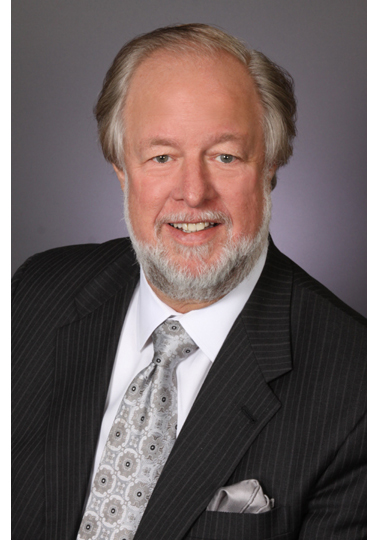Q&A Part 3: Small/mid-tier competition considerations—and what it means to be a large organization with contracts moving back into small business set asides
Watch the webinar replay and listen to the podcast (MP3)
 Recently, Bob Lohfeld, CEO, Lohfeld Consulting Group and Bill Gormley, President and Managing Partner, The Gormley Group discussed various challenges faced by BD, capture, and proposal professionals supporting Federal Government contractors.
Recently, Bob Lohfeld, CEO, Lohfeld Consulting Group and Bill Gormley, President and Managing Partner, The Gormley Group discussed various challenges faced by BD, capture, and proposal professionals supporting Federal Government contractors.
Read the Q&A, watch the webcast, or listen to the podcast to find out how to help your company work smarter and reinvent what you’re doing to remain competitive in today’s GovCon market.
Question: With the way that procurements are coming out now, what do you do as a mid-tier company? How do you compete or should you? Should you go small again?
Bill: The NAICS codes are really size dependent, so you’ll see you’re either “small” or you’re “other than small.” So “mid-tier” is a self-anointed term that in government regulations has no meaning. So, you’re either small or you’re large. So I think the key here is when you get into this graduation mode of going from small to large, there are a lot of unknowns. You should understand that in services, it’s dollar-driven on products if you’re offering that or people count-driven in terms of determining the size, and everyone should basically understand that. You should start planning your graduation from small to other when you start your company. If you don’t have an end game when you start something, you never know where you are in the game and how long it’s going to take. Sometimes we get lost in that and then what happens is, in meeting with many companies, they say, “Hey! We can no longer compete on set-asides!” I understand that. So why is that a surprise? “Well, we’re mid-tier now.” You may classify yourself as mid-tier, but the government doesn’t recognize you as mid-tier. So no one’s going to feel sorry for you.
Bob: That’s true—and it’s not a phenomenon in today’s procurement market. This mid-tier issue’s been around for 40 years, and every small business that graduates thinks they should get another helping hand here as a mid-tier contractor and often aren’t ready to compete against the largest. The ones that are successful as mid-tiers recognize that graduation is coming, and as Bill says, they plan for it. They prepare for it. They begin looking to have procurements and contract awards that aren’t set-asides in their business. They sharpen their pricing skills, and they sharpen their skills to write highly competitive proposals. And if they don’t, then there’s two trajectories left. One is that someone buys you if they can find some value in what you have created, or like many that reach this mark, they go out of business and just sort of gradually vanish, and you’ll see them 2 or 3 years down the road with a third of their revenue and then it goes to zero and they’re gone.
Bill: So it kind of boils down to having a strategic business plan from the beginning.
Bob: And for those who compete in the full-and-open, it is a tough, tough market played by the best and brightest athletes in this industry. If you’re playing ball at the high school level, when you step up to play in the Big 10, it’s a whole different game and you need somebody to see that, to visualize it, to internalize it, and to lay down a plan and execute the plan to say, “We have to be ready.”
Question: As a small business, how would a company get to the full-and-open competition when there is no size standard for mid-tiers?
Bill: You have to start day one to go for full-and-open (and even if you’re small, to gain experience and have success lessons). I know that BD and resources are limited, so you’re not going to use a shotgun approach, but you should put your toe in the water and go after some full-and-open along the way just to get the lessons learned. Could be a negative lesson—a negative lesson later on could be used as a positive experience.
Bob: Stay focused in your market. Know what you do and do really well. Build a deep core competency in your company, and when you do that, then you can take on the larger players. When you look at deals—they come in different dollar denominations—pick one that’s below the threshold of what becomes a key deal for a large company. So maybe $15 million is a good threshold number. In the large businesses, if the deals fall below $15 million, they’re bidding them with a pickup team. They’re bidding them with a project team and not applying those great corporate resources—the A players don’t get into those deals—so your A Team can take them away all day long.
Bill: Part of it is also to make sure you get a debrief—even if you’re a winner. If you don’t win, you want to get a debrief so you start to acquire some lessons here.
Question: What is the role of IDIQs for companies transitioning from small to large business?
Bob: I’d say it’s a must have in my view and it goes by market. If you look at the IT Services market, 60% of that market today is flowing through vehicles—the multiple awards and GWACs. In professional services, 40% is flowing through. So if you want to be in the swim lane, you have to have a vehicle to stake a claim.
Bill: Yes. I’d say that they play a key role in climbing, however you want to categorize it, or growing up in the business size corporate ladder. In other words, you have to play there in order to grow and to win. So it’s “not to be ignored.”
Bob: And the new vehicles, as you watch the history of these vehicles, the period of performance keeps creeping out. In the early days, they were 3 years or maybe 5 years, and now they’re 10 years with absolute acknowledgement that on the last day of your 10th year, you can book a task order that’s good for 5 years.
Bill: In regards to your size, depending on where you are with a particular IDIQ, even if you can’t fully deliver 100% of the requirement (I know it’s hard and everyone wants to go in as a prime, that’s understood), sometimes being a sub also gets you in the door and you can have adjacent services and become familiar with the customers as well. Don’t forget that when you’re a sub, the prime is always going to be looking at you.
Question: As you transition projects from being a large business prime and may have to become a sub to a small business, how do you transition from prime to sub?
Bill: You don’t burn your small business bridges. There’s been a lot of talk over the years of people bringing subs in and making them part of a proposal. They won the business, and they don’t use their partners. This could come back on you if you haven’t played fair in the market and at some point you need to become a sub. Don’t burn those bridges.
Bob: As the primes that were small and have outgrown the size standard can’t compete again, the work is going to go to a small business. You have one chance to pick a partner and collaborate and get half a loaf rather than what you had before. It’s tough.
Bill: In regard to that, utilize your qualified small network partners. So to Bob’s point, a network becomes very, very critical here and it gets back to what we talked about in the very beginning when Brent talked about relationships. It’s not only relationships in government, but your relationships in the market.
Read Part 4 of the Q&A in the next blog post.
Watch the webinar replay and listen to the podcast (MP3)
Listen to the podcast on your PC (MP3):
Alternative content
Click to listen to the podcast on your tablet/phone (MP3)
During the webinar, Bob referenced a number of articles to assist government contractors:
- 7 questions to answer when making bid/no-bid decisions (improve your win rates)
- Win rates double with seven quality measures – updated (Lohfeld seven quality measures)
- DoD revamps source selection process
- DoD releases new Source Selection Procedures
Our experts:
 Bob Lohfeld, CEO and Founder, Lohfeld Consulting Group
Bob Lohfeld, CEO and Founder, Lohfeld Consulting Group
Bob Lohfeld serves as CEO and general manager of Lohfeld Consulting Group. He has more than 30 years’ experience winning contracts in the government market and is recognized consistently for leadership in business development, capture management, and winning proposals development. He teaches Capture Management, and he writes the Capture Management column in Washington Technology.
Prior to forming Lohfeld Consulting Group, Bob served as Division President at Lockheed Martin, Vice President of Lockheed Martin Information Technology, Senior Vice President at OAO Corp., Systems Engineering Manager at Computer Sciences Corp. (CSC), and Program Manager at Fairchild Industries. He also taught at the graduate level at George Washington University School of Engineering Administration.
Bob has served on the Board of Directors for the Association of Proposal Management Professionals (APMP) and Association of Proposal Management Professional National Capital Area Chapter (APMP-NCA), as Chairman of the American Council on Technology Industry Advisory Council (ACT/IAC), Vice Chairman of the Technology Council of Maryland (TCM), and Board Member of the Armed Forces Communications and Electronics Association (AFCEA), Government Electronics and Information Association (GEIA), and Juvenile Diabetes Research Foundation (JDRF Capital Region). He is a three-time winner of Federal Computer Week’s Federal 100.
 Bill Gormley, President and Managing Partner, The Gormley Group
Bill Gormley, President and Managing Partner, The Gormley Group
Bill Gormley is a 40-year veteran of government procurement. He spent 28 years at the GSA in positions ranging from procurement agent to Senior Executive (SES) Assistant Commissioner for the Office of Acquisition. He was responsible for acquisition policy and all contracting operations, which included the Federal Supply Schedules Program. Bill’s extensive experience re-engineering the GSA Multiple Award Schedules Program earned him recognition by both government and industry. While serving as Assistant Commissioner for the Office of Acquisition at GSA, Bill received both the Presidential Rank Award for Meritorious Executives and the Vice President’s “Hammer Award” for changes to the Federal Supply Schedules Program. He was twice named to the Federal Computer Week Federal 100 awards—a prestigious group nominated by their peers for outstanding contributions to industry and government.
Bill left GSA to become President of the Washington Management Group (WMG). Shortly after joining WMG he purchased FedSources, a leading market intelligence firm for federal spending, and spent the next 11 years running both companies as President and CEO until both were acquired in 2011 by Deltek, Inc.
In addition to Bill’s role as President and Managing Partner of The Gormley Group, Bill serves as Chairman of The Coalition for Government Procurement and Vice Chair of the Procurement Roundtable. He is a lifetime member of the National Institute for Government Purchasing (NIGP). Bill has contributed to the publication of two books related to the GSA Schedules Program and is recognized for his GSA Schedules domain expertise.
Paperback or Kindle
10 steps to creating high-scoring proposals
by Bob Lohfeld
contributors Edited by Beth Wingate
Subscribe to our free ebrief
Teaming friends, frenemies, and enemies—12 tips to mitigate harmful effects
Did you know that contracting officers spend up to 20% of their time mitigating disputes between teaming partners? In an informal poll we conducted on LinkedIn last month, 40% of respondents classified their teaming partners as “frenemies” on their last bid.
Explore Further
- Advice (539)
- AI (28)
- APMP (18)
- Army MAPS Contracts (3)
- Business Development (294)
- Capture Management (266)
- Complex Technology Grants Services (26)
- Favorite Books (5)
- GenAI (4)
- Go-to-Market (27)
- Graphics (5)
- Lohfeld Books (2)
- NASA SEWP VI Contracts (2)
- Navy SeaPort-NxG Contracts (2)
- NIST MSE Grants (1)
- NIST NAPMP Grants (2)
- Past Performance (63)
- Post-submission Phase (14)
- Pre-RFP Preparation (264)
- Proposal Management (339)
- Proposal Production (75)
- Proposal Reviews (38)
- Proposal Writing (107)
- Pursuit Phase (108)
- Research Report (4)
- Resources (63)
- Tools & Tips (421)
- Training (13)
- Uncategorized (223)

Sign Up for INSIGHTS and Download your FREE book
We'd love to help you with your proposals. Enjoy our complimentary Lohfeld Consulting Group Capture & Proposal Insights & Tips book with your FREE subscription to our Insights Newsletter.
GET YOUR FREE BOOK




